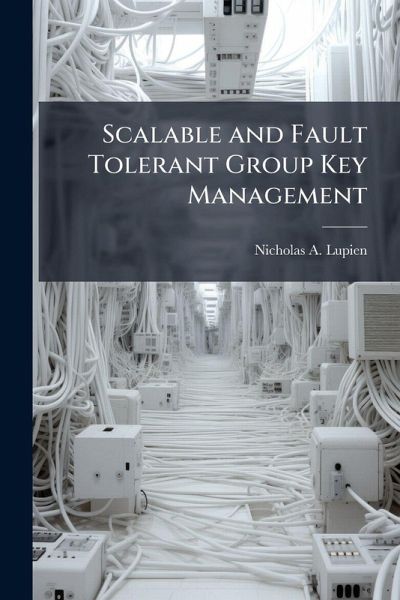
Scalable and Fault Tolerant Group Key Management
Versandkostenfrei!
Versandfertig in über 4 Wochen
15,99 €
inkl. MwSt.
Weitere Ausgaben:

PAYBACK Punkte
8 °P sammeln!
To address the group key management problem for modern networks this research proposes a lightweight group key management protocol with a gossip-based dissemination routine. Experiments show that by slightly increasing workload for the key update mechanism, this protocol is superior to currently available tree-based protocols with respect to reliability and fault tolerance, while remaining scalable to large groups. In addition, it eliminates the need for logical key hierarchy while preserving an overall reduction in rekey messages to rekey a group. The protocol provides a simple "pull" mechani...
To address the group key management problem for modern networks this research proposes a lightweight group key management protocol with a gossip-based dissemination routine. Experiments show that by slightly increasing workload for the key update mechanism, this protocol is superior to currently available tree-based protocols with respect to reliability and fault tolerance, while remaining scalable to large groups. In addition, it eliminates the need for logical key hierarchy while preserving an overall reduction in rekey messages to rekey a group. The protocol provides a simple "pull" mechanism to ensure perfect rekeys in spite of the primary rekey mechanism's probabilistic guarantees, without burdening key distribution facilities. Benefits of this protocol are quantified versus tree-based dissemination in Java simulations on networks exhibiting various node failure rates. This work has been selected by scholars as being culturally important, and is part of the knowledge base of civilization as we know it. This work was reproduced from the original artifact, and remains as true to the original work as possible. Therefore, you will see the original copyright references, library stamps (as most of these works have been housed in our most important libraries around the world), and other notations in the work. This work is in the public domain in the United States of America, and possibly other nations. Within the United States, you may freely copy and distribute this work, as no entity (individual or corporate) has a copyright on the body of the work. As a reproduction of a historical artifact, this work may contain missing or blurred pages, poor pictures, errant marks, etc. Scholars believe, and we concur, that this work is important enough to be preserved, reproduced, and made generally available to the public. We appreciate your support of the preservation process, and thank you for being an important part of keeping this knowledge alive and relevant.












